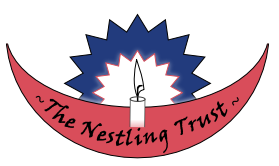The following excerpt from The Britain Nepal Society gives insight into the current Coronavirus situation in Nepal:
Latest COVID-19 Situation Report from Nepal & Recent Press Highlights, Nov-Jan, 2022
1. Plan (November – February 2021), and different federal ministries, provincial governments and local governments are working together to ensure that response plans are in place to mitigate the impacts of the latest spike in COVID-19 cases.
2. testing facilities have also reduced costs per test to Rs 1500 from an earlier charge of Rs 2000.
Latest COVID-19 Situation Report from Nepal & Recent Press Highlights, Nov-Jan, 2022
- The Ministry of Health and Population in late November had sent some 750 samples for gene sequencing to the UK to find out whether the new omicron variant of the coronavirus had entered Nepal.
- Less than a month after India started getting affected by the suspected omicron strain of COVID-19, the variant is currently spreading like wildfire in neighbouring Nepal.
- The COVID-19 spread in India also resulted in mass return of migrant workers across the porous border to Nepal, and a lack of effective border testing and quarantine procedures have also greatly contributed towards the spread of COVID-19 in Nepal.
- Nepal is currently reporting a daily rise of approximately 10,000+ new COVID-19 infections, highest figures since onset of pandemic in March 2020. The majority of this is concentrated in the capital Kathmandu. It is also worth noting the current local trend shows that a lot of symptomatic people are not testing themselves and therefore, the real figure for positive cases would be much higher.
- 14 districts have over 500 active COVID-19 cases as of January and WHO Nepal has reported that COVID-19 infection is being seen massively amongst children. The risk of infection is more in children below the age of 12, ineligible for the vaccine.
- Latest COVID-19 infection rate is reported to be higher than 50%, the highest average infection rates the country has recorded till now and five times higher in comparison to earlier waves. Health Ministry projects COVID-19 infection will peak on the last week of January with highest number of infections being recorded between 22-29 January.
- Superspreader political events and mass gatherings from November through to December 2021 increased risk of further transmission which have contributed to the exponential rise in recent COVID-19 cases.
- With the surge in cases, the Ministry of Health and Population (MoHP) of the Government of Nepal has come up with a COVID-19 Health Sector Rapid Action
1. Plan (November – February 2021), and different federal ministries, provincial governments and local governments are working together to ensure that response plans are in place to mitigate the impacts of the latest spike in COVID-19 cases.
- Although there was a good mix of both Delta and Omicron variants in December 2021, the latest gene sequencing report from the Ministry of Health and Population indicated that 88% of the recent cases as of January 2022 is Omicron.
- However, while case numbers have risen exponentially, hospitalisations are not reported to have increased at the same rate, and are definitely lower than that during the first two Delta waves, thanks to a good vaccination coverage. According to MoH Dr Manisha Rawal, the number of critically ill COVID-19 patients admitted in hospitals is four times less currently, in comparison to the second wave. WHO reported that over 90% of COVID-19-infected are in home isolation. Having said that, the Omicron variant remains a great concern for the unvaccinated.
- Whilst the first and second waves of COVID-19 Delta variant resulted in shortage of hospital ICU beds and oxygen supplies, Omicron so far is causing a significant shortage of health workers who are continuing to get infected across Nepal’s hospitals, and especially so in Kathmandu:
- There is acute and chronic shortage in medical staff across Nepal due to the rapid spread of Omicron, which has prompted the Ministry of Health and Population to consider shortening the isolation period for doctors, nurses and paramedics to five days in a similar fashion to rules in the USA and India.
- With more and more healthcare personnel testing positive for COVID-19, health system coming under tremendous pressure, public health experts say human resources is proving to be the major problem in the third wave; Operation Theatre of Koshi Hospital in Biratnagar has been shut down after 76 staff members of the hospital tested positive; Sudurpashchim hospitals are feeling pressure of both seasonal flu and COVID-19 patients as mercury drops; Bagmati Provincial government to deploy 300 nurses for the treatment and care of COVID-19 patients. Even major health facilities such as Teaching Hospital (TUTH), BIR Hospital and Sukraraj Tropical and Infectious Disease Hospitals in Kathmandu are finding it increasingly challenging to cope with medics getting infected. At the latter, there are so many health workers infected by COVID-19 that they have had to postpone the vaccination drive by a week due to short staffing.
- At the district level, human resource capacity to operate ventilators and provide ICU case management is a critical challenge and of the utmost importance to address in order to effectively respond to severe COIVD19 cases across the country.
- Given Nepal’s largely unprepared and limited healthcare infrastructure which works on a shift basis, medical staff having to isolate even just a few days is seriously disrupting medical care in Kathmandu and especially in rural areas where hospitals and doctors were always few and far between.
- Cost of PCR Test has been reduced to Rs 800 for asymptomatic people, where as those showing symptoms can get the test done for free in government centres. Private
2. testing facilities have also reduced costs per test to Rs 1500 from an earlier charge of Rs 2000.
- The booster dose for frontliners only began on January 16th, and the rapid rise in cases have resulted in poorly organised vaccination drives, requiring medical workers to queue up for hours and also return on another day depending on the daily vaccine stock levels of the centre. According to the Ministry of Health and Population, the booster dose will also be provided to all senior citizens aged above 60 years as well as those who have completed six months of the full dose vaccine from January 28th onwards.
- Despite having around 13 million vaccine doses in stock (as of the first week of January 2022), authorities failed to boost the overall vaccine drive, despite relatively low levels of general COVID-19 vaccination hesitancy in Nepal.
- The vaccination drive against COVID-19 has been affected due to a lack of syringes required to administer the vaccine in Nepal. The government has ample stock of the vaccine which have been delivered across Nepal, but there is a critical shortage of around syringes to administer them.
- Students are being given the vaccine against COVID-19 in their respective schools. The schools are closed for winter vacation amidst the third wave of COVID-19 pandemic till 29 January, and the children aged 12 to 17 of this age group are being administered the vaccine during the vacation.
- As of December 2021, Nepal has received over 31 million doses of Covid-19 vaccines from various sources.
- As of December 2021, 58.4% of the population above 18 years have been administered at least one dose of COVID-19 vaccine and 47% have been fully vaccinated (United Nations Nepal).
- Lab tests have shown that the AstraZeneca and VeroCell vaccines most used in Nepal may not be so effective against Omicron, and only m-RNA vaccines like Pfizer and Moderna may be effective as boosters to stop infections. However, researchers have said all vaccines, including AstraZeneca and the Chinese jabs, significantly protect against serious illness. Infectious diseases specialist at HAMS hospital in Kathmandu Anup Subedi stated that mRNA vaccines are indeed more effective against the new variant but all the shots significantly reduce severity and mortality and therefore, the priority should be to vaccinate as many people as soon as possible and to boost the immune-compromised and frontliners.
- Secretary of the Ministry of Health and Population, Dr Roshan Pokharel, has acknowledged that there is no record of 2 - 2.5 million doses of COVID-19 vaccines and there have been speculations that these vaccines may have been sold to corporate houses. There are also videos in the social media showing vaccine vials being sold in the black market.



